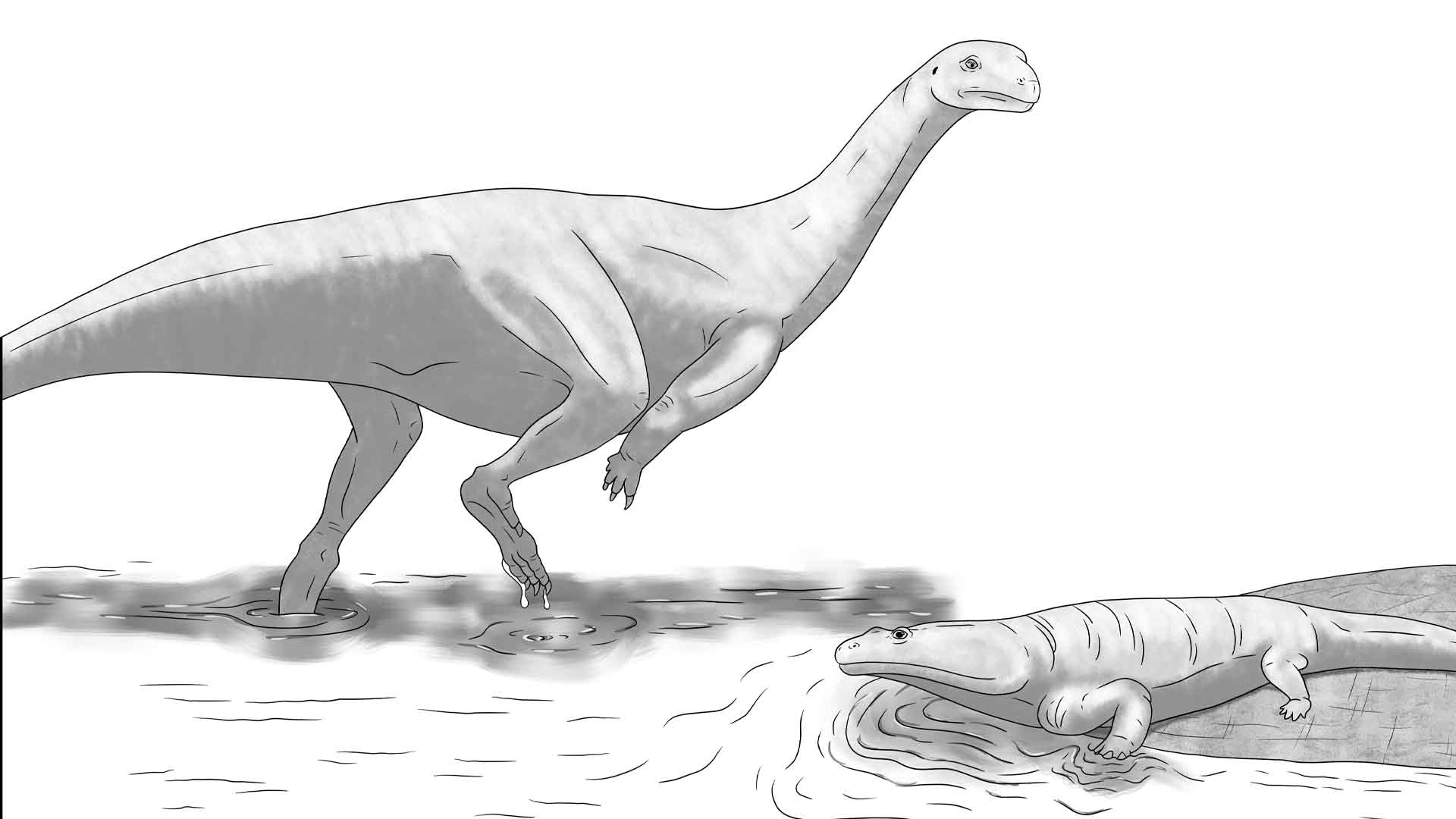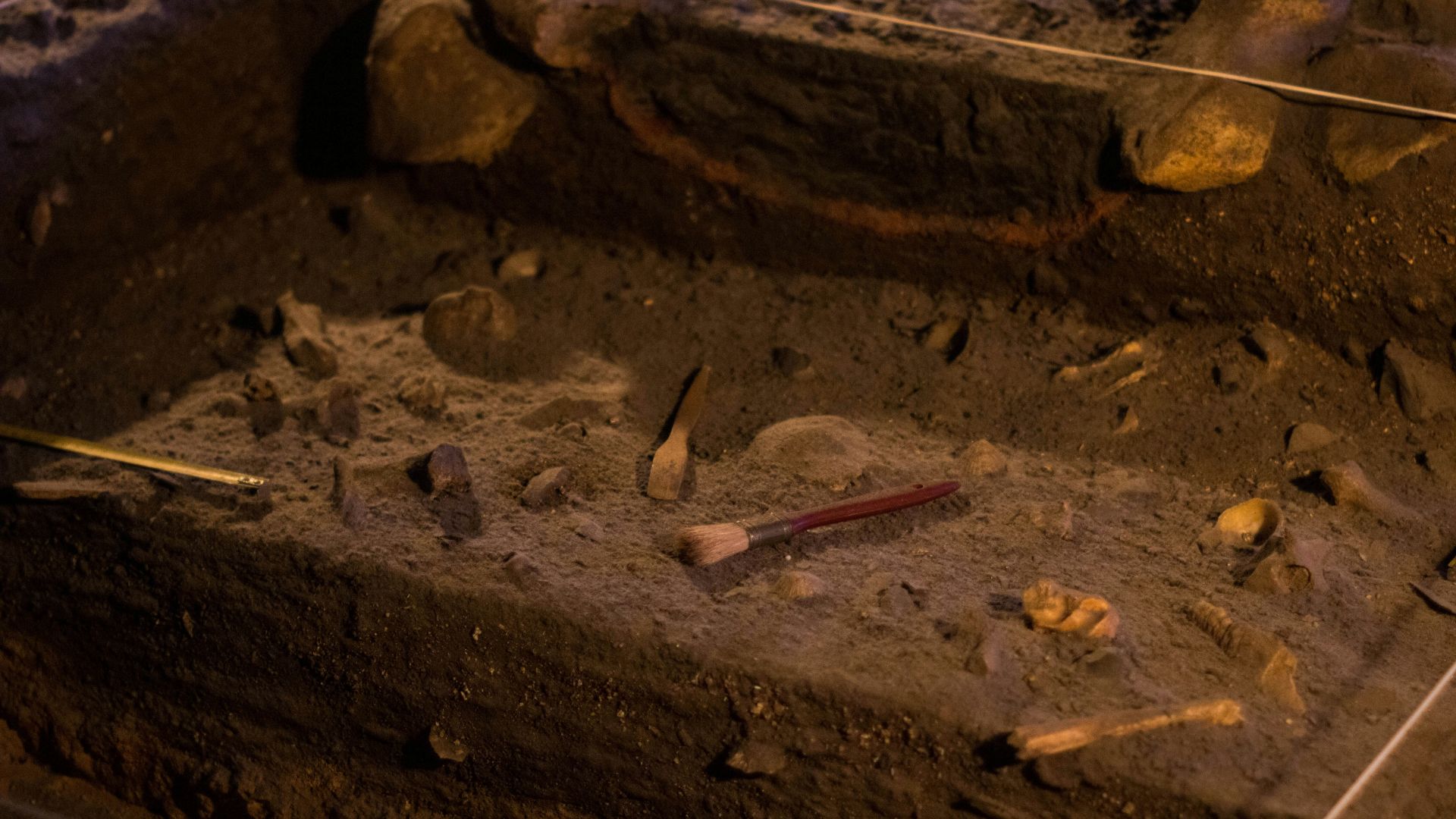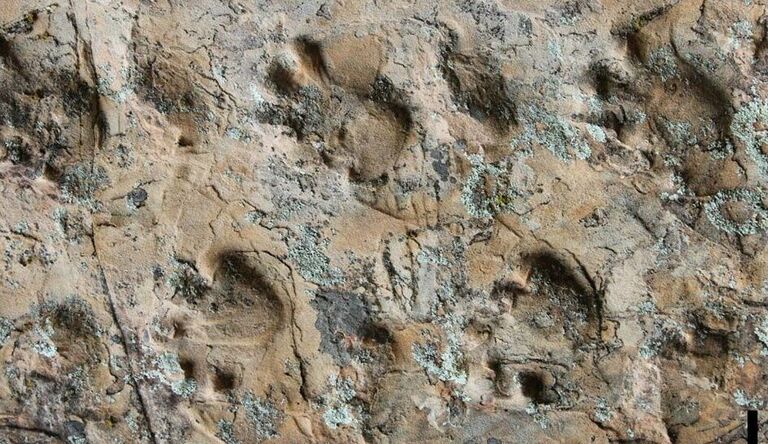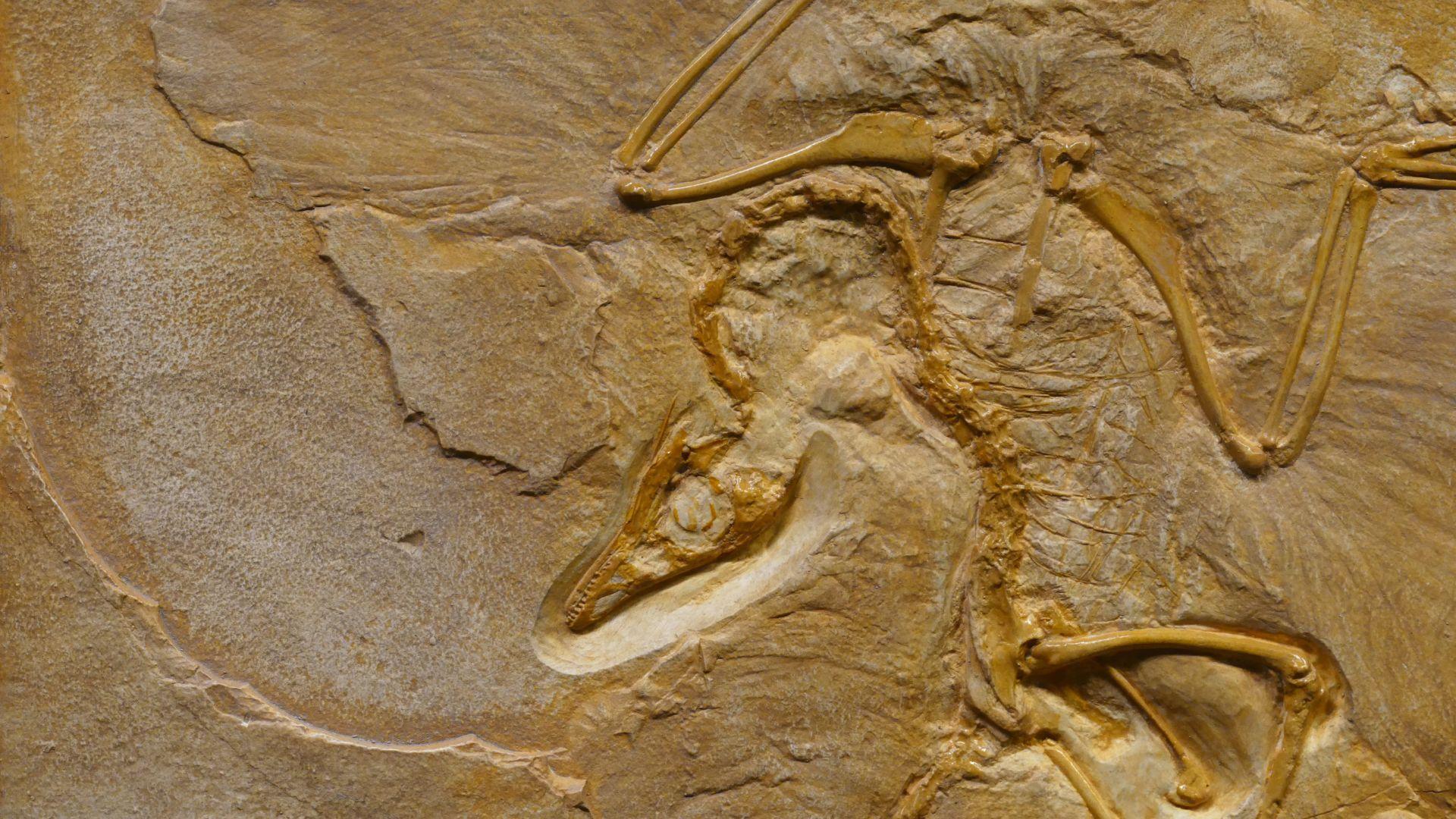New Dinosaur Species Discovered in Zimbabwe
In a groundbreaking discovery, scientists have identified a new dinosaur species, Musankwa sanyatiensis, in Zimbabwe. This find marks only the fourth dinosaur species discovered in the country, highlighting Zimbabwe’s rich prehistoric past.
Musankwa sanyatiensis adds a significant chapter to our understanding of dinosaur evolution in the region, showcasing the untapped potential of the Mid-Zambezi Basin.
Meet Musankwa Sanyatiensis
Musankwa sanyatiensis is a newly discovered sauropodomorph dinosaur. This long-necked herbivore roamed the earth during the Late Triassic period, approximately 210 million years ago.

Source: Atashni Moopen/X
Weighing around 390 kilograms (850 pounds), it was one of the larger dinosaurs of its time. The discovery provides a fascinating glimpse into the diversity of prehistoric life in what is now Zimbabwe.
Significance of the Find
The discovery of Musankwa sanyatiensis is particularly significant as it is the first dinosaur to be named from the Mid-Zambezi Basin in over 50 years.

Source: Grianghraf/Unsplash
This region, relatively unexplored until now, is proving to be a treasure trove of paleontological wonders.
The Discovery Team
An international team of scientists led by Professor Paul Barrett from the Natural History Museum of London made this remarkable discovery.

Source: Freepik
Dr. Kimberley Chapelle from Stony Brook University played a crucial role in the excavation and analysis. The team’s diverse expertise highlights the collaborative nature of modern paleontology, bringing together specialists from around the globe.
Unique Features
Despite being represented by a single hind leg, Musankwa sanyatiensis possesses unique features that set it apart from other dinosaurs of its time.

Jon Tyson/Unsplash
These features, found in the thigh, shin, and ankle bones, were crucial in identifying and classifying the new species. The distinctive characteristics of these bones provide valuable insights into the dinosaur’s anatomy and evolutionary relationships.
The Field Expeditions
The discovery was made during two field expeditions to Lake Kariba in 2017 and 2018. The research team lived on the houseboat “Musankwa,” which served as their home and mobile laboratory.

Source: Trnava Universty/Unsplash
In 2018, they unearthed the fossil that would become Musankwa sanyatiensis, marking a significant milestone in their expedition and in Zimbabwe’s paleontological history.
Digital Reconstruction
After the fossil was discovered, it underwent micro-CT scanning to create detailed digital reconstructions. Dr. Chapelle processed the data and performed the digital reconstructions, providing a clear picture of Musankwa sanyatiensis.

Source: CSIRO
This advanced technology allowed scientists to study the fossil in great detail, revealing important aspects of its structure and evolutionary significance.
Zimbabwe's Dinosaur History
Prior to Musankwa sanyatiensis, only three dinosaur species had been discovered in Zimbabwe: “Syntarsus” rhodesiensis in 1969, Vulcanodon karibaensis in 1972, and Mbiresaurus raathi in 2022.

Source: Markus Spiske/Unsplash
Each discovery has contributed to our understanding of the region’s prehistoric biodiversity. Musankwa sanyatiensis is a valuable addition, further enriching Zimbabwe’s paleontological record.
Potential for Future Discoveries
The Mid-Zambezi Basin holds immense potential for future discoveries. As more fossil sites are explored, scientists hope to uncover additional significant finds that will shed light on early dinosaur evolution.

Source: NPS.gov
“Based on where it sits on the dinosaur family tree, Musanwka sanyantiensis is the first dinosaur of its kind from Zimbabwe,” says Dr. Chapelle. “It, therefore, highlights the potential of the region for further paleontological discoveries.”
Challenges in the Region
One reason for the limited number of discoveries in Zimbabwe is “undersampling.” Fewer paleontologists have explored this region compared to other parts of the world.

Source: Marcus Lange/Pexels
However, recent efforts are beginning to change this trend, and the discovery of Musankwa sanyatiensis conveys to the region’s rich paleontological potential.
Quotes from the Scientists
“Despite the limited fossil material, these bones possess unique features that distinguish them from those of other dinosaurs living at the same time,” said Dr. Chapelle, highlighting the importance of the find.

Source: Freepik
This discovery not only adds to our knowledge of dinosaur diversity but also emphasizes the value of continued exploration in underexplored regions.
Looking Forward
The discovery of Musankwa sanyatiensis shows the importance of continued exploration in Zimbabwe and similar less-explored regions.

Source: Wikimedia Commons
Future excavations hold the promise of more exciting discoveries that will enrich our understanding of the ancient world.
